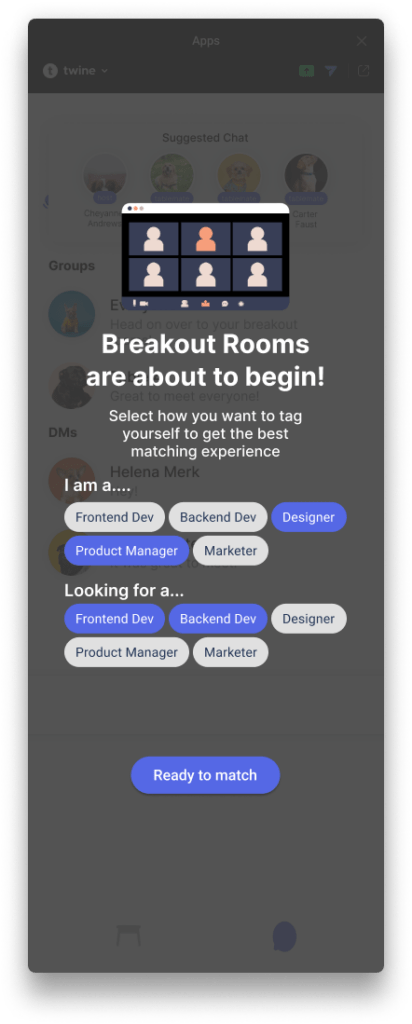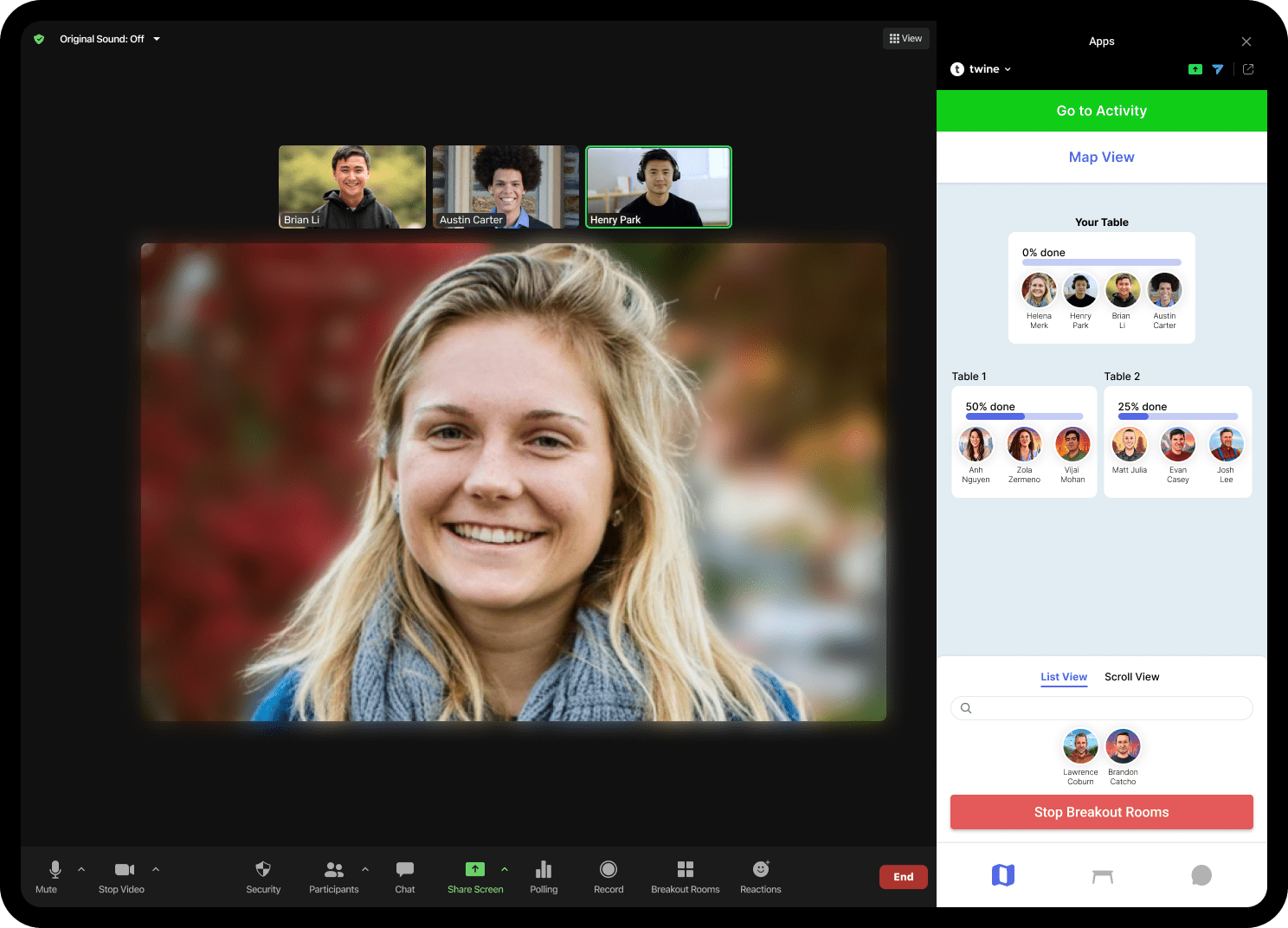Software company twine’s announcement today that it is acquiring the relationship-building technology company Glimpse is a sign of the evolution of virtual meetings and possibly the first step toward a more tangible virtual event world.
The acquisition’s resulting new product, twine for Zoom, will allow meeting organizers to build and manage dynamic interactions using a trusted platform with an interface reminiscent of gaming platforms.
The Players
First, the details.
These two early-stage companies were showered with VC money based in part on their tech cred. The founders of DoubleDutch event management software that was sold to Cvent in 2019 raised $4.3 million in seed funding to start twine, which they describe as “a remote-first company that facilitates serendipitous virtual meetings by facilitating strings of short meetings in virtual windows.”
Companies as large as Microsoft joined smaller groups taking advantage of the platform for employee engagement events, speed networking, new employee onboarding and community events. CEO and co-founder Lawrence Coburn called it a “virtual watercooler.”
Read More: How Two Virtual Meetings Added Meaning to their Gatherings
San Francisco-based Glimpse was backed by the heavy hitting venture capital funds Y Combinator and Maven Ventures. With access to the Zoom Breakout Room platform, the team is building software to foster authentic relationships and have already connected millions of people since their launch in March 2020.
“Glimpse is a great example of a highly innovative company utilizing the Zoom App Marketplace to enhance the customer experience,” says Ross Mayfield, product lead for Zoom Apps and Integrations.
The Product
Glimpse CEO and co-founder Helena Merk described the synergy of the two companies as “shared mission and values.”

What is now an add-on for Zoom to create networking—random meetings of pairs and small groups for set times with optional conversation prompts—will soon be available as an app that will add a spatial component, streamlined access and the flexibility to control or allow organic engagement.
Coburn describes the overwhelming number of virtual meetings now happening on Zoom as top-down content delivery. The twine for Zoom app will open a window that looks like a series of tables with pictures of attendees “sitting” at each one. The event planner can determine the number of seats, turn on matchmaking based on tags (e.g., name of team, job title, etc.), randomize table assignments, pre-select who sits where, or label the table and let people self-select.
The planner can also broadcast a message to all groups or call everyone back to the main Zoom room—all without leaving the Zoom platform. That way there is no awkward transition where people might get dropped based on what browser they’re using or a technical glitch.
The size is only limited by Zoom hard stops, currently 500 people. When rolled out to Zoom Webinars, it will work for much larger groups.
“It puts all the power in the hands of the planner,” says Coburn, who pointed out that the technology will also be popular for connecting remote teams.
Coburn’s vision is to bring back the natural networking that happens at in-person events, the little conversations that used to occur before and after a session. “Let’s get back to starting and ending with time to chat,” he says.
The Future
Near term, the combined company is focusing on delivering a consistent experience with unified reporting so the organizers know who met with whom and for how long. That could expand from Zoom to Microsoft Teams and Slack. “It will have portability integrated in a single platform,” Coburn says.
Read More: Are You Ready for an Improved Zoom?
He sees the special technology evolving from simple virtual tables to more elaborate Minecraft-style gaming landscapes. A meeting designer could construct a sidebar of Zoom coffee shops and places where people can congregate with their customized avatar. It will all live on the power and stability of Zoom built in a digital store for third-party designers to add functionality—a Zoomiverse, if you will.





